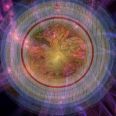Students
23 January 2017
Physics Colloquia Series Presents: 27 January 2017: Prof Nicola Spaldin, ETH Zurich; From Materials to Cosmology: Studying the early universe under the microscope
The behaviour of the early universe just after the Big Bang is one of the most intriguing basic questions in all of science, and is extraordinarily difficult to answer because of insurmountable issues associated with replaying the Big Bang in the laboratory. One route towards the answer -- which lies at the intersection between cosmology and materials physics -- is to use laboratory materials to test the so-called "Kibble-Zurek" scaling laws proposed for the formation of defects such as cosmic strings in the early universe.
Talk for Prospective DPhil Students

Talk for Prospective DPhil Students will take place on Wednesday 30th November 2016 at 3.30pm in the Dennis Sciama Lecture Theatre the talks will be followed by a drinks reception in the Denys Wilkinson Building Common Room.
The talks will be given by:
Professor Daniela Bortoletto
Director of Graduate Studies for Particle Physics
Professor Subir Sarkar
Head, Particle Theory Group
Professor Andrei Seryi
John Adams Institute for Accelerator Science
Kim Proudfoot
01865 273360
kim.proudfoot@physics.ox.ac.uk
25 October 2016
Physics Colloquium Nov 11: Professor Jon Rosner (Chicago), 'Exotic combinations of quarks - A journey of fifty years'
The early 1960s witnessed a wealth of elementary particles described in terms of simple combinations of a few more elementary units, dubbed quarks. The known mesons and baryons could all be described as states of quark-antiquark or three quarks. However, it was not understood why certain more elaborate combinations, such as (two quarks + two antiquarks) or (four quarks + one antiquark) had not been observed. It has taken nearly half a century, but these "exotic" particles are now beginning to be seen and understood.
25 October 2016
Physics Colloquia Series Presents: Astro Special - Dr Jamie Holder,University of Delaware, presents 'Astronomy at the Highest Energies: Exploring the Extreme Universe with Gamma Rays'
The gamma-ray band of the electromagnetic spectrum probes some of the most extreme environments in the Universe. Photons of these very-high energies can only be produced by the interactions of subatomic particles that have been accelerated to almost the speed of light. This acceleration occurs in a surprisingly wide variety of astrophysical sources: close to black holes and neutron stars, in the blast waves of supernova explosions, and in the relativistic jets of active galaxies.
25 October 2016
Physics Colloquia Series Presents: Dr. Trevor Cross,Group Chief Technology Officer, e2v, entitled '60 years of imaging technology'
From the earliest commercial production of electronic image sensors for television in the 1950s, to the diverse application of specialist silicon image sensors for the Hubble space Telescope to digital dentistry this talk will outline the manufacturing technology and changes through 60 years at e2v. Somewhat surprisingly, there are today lessons to be learned, and technologies to be applied from this to the emerging new platform technology of ultra-cold atom sensing and metrology.
25 October 2016
Physics Colloquia Series Presents: Dr Cait McPhee, University of Edinburgh, entitled 'Proteins as switchable Janus ellipsoids'
Janus particles are micro- or nano-scale particles whose surfaces have two or more distinct physical properties. Such asymmetry results in interesting self-assembly properties, but homogeneous Janus particles can be difficult to synthesize. The protein BslA (Bacterial Surface Layer A) is a small (~4 nm) protein produced by the bacterium Bacillus subtilis that has a hydrophilic ‘body’ to which is appended a surface-exposed hydrophobic ‘cap’.
25 October 2016
Physics Colloquia Series Presents: Professor Séamus Davis, Cornell University, entitled 'Visualizing Quantum Matter'
Everything around us, everything each of us has ever experienced, and virtually everything underpinning our technological society and economy is governed by quantum mechanics. Yet this most fundamental physical theory of nature often feels as if it is a set of somewhat eerie and counterintuitive ideas of no direct relevance to our lives. Why is this?
25 October 2016
Physics Colloquia Series Presents: LIGO Special by Professor Gabriela Gonzalez entitled 'Searching for - and finding! Gravitational Waves'
On September 14 2015, the two LIGO gravitational wave detectors in Hanford, Washington and Livingston, Louisiana registered a nearly simultaneous signal with time-frequency properties consistent with gravitational-wave emission by the merger of two massive compact objects. Further analysis of the signals by the LIGO Scientific Collaboration and the Virgo Collaboration revealed that the gravitational waves detected by LIGO came from the merger of a binary black hole system. This observation, followed by another one in December 2015, marked the beginning of gravitational wave astronomy.
22 September 2016
Colloquia Series Hilary Term 2017

The following lectures will be given at 3.30pm on Fridays in the Martin Wood Lecture Theatre, Clarendon Laboratory, Parks Road (unless otherwise stated). Tea will be served in the Physics Common Room at 4.30 pm.
The aim of the colloquia series is to share with members of the department the latest information on physics research and developments. Undergraduates, graduates, postdocs, faculty members and support staff are all encouraged to attend these lectures.
7 July 2016
Nicholas Kurti Prize 2016
Condensed Matter Physics is delighted to announce that Marein Rahn, third year postgraduate student, has been awarded the Nicholas Kurti Prize 2016 for distinguished work by a third year graduate student in Condensed Matter Physics.
Many congratulations, Marein.


